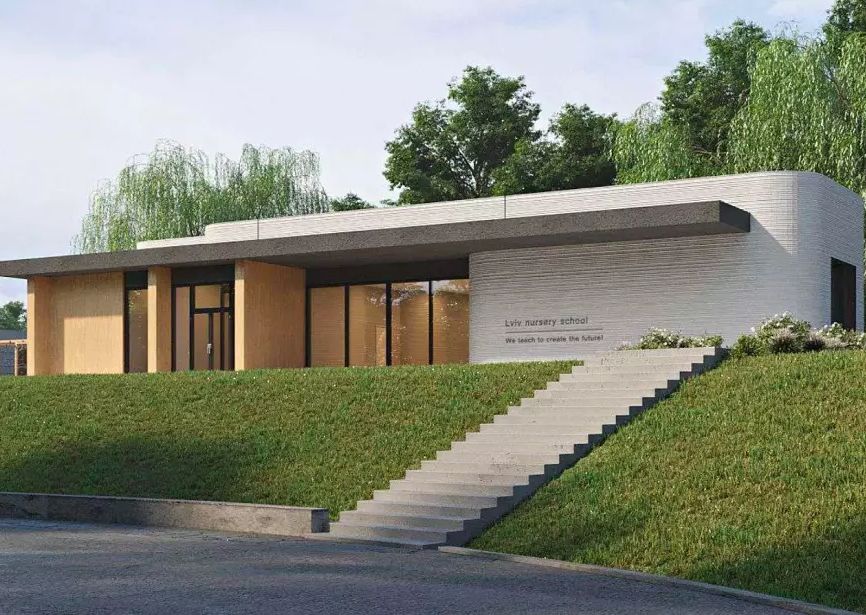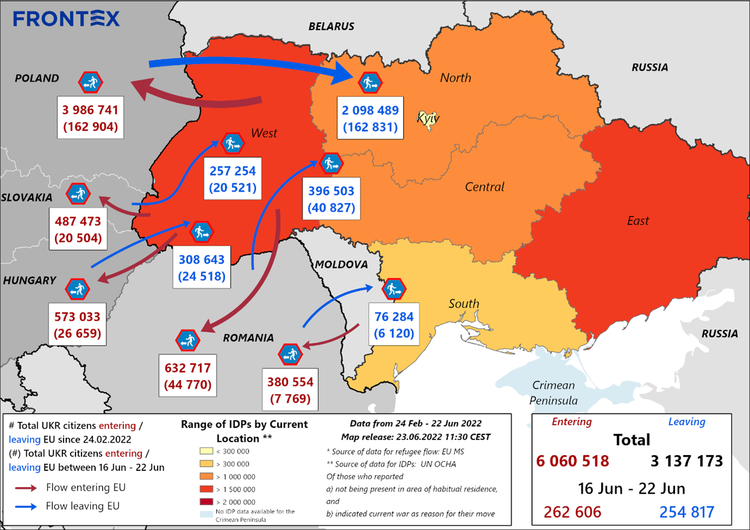Nominations for the 2022 3D Printing Industry Awards are now open. Who do you think should make the shortlists for this year’s show? Let us know by casting your vote now.
Non-profit Team4Humanity (TEAM4UA) has unveiled plans to construct the first 3D printed school in Europe, on the war-ravaged streets of Ukraine.
Since Russia’s full-scale invasion of Ukraine in February 2022, over 2,000 schools have reportedly been damaged or destroyed. But with Ukrainians starting to move back to the relative safety of Lviv, a western city bordering Poland, Team4Humanity has begun making plans to rebuild the country’s infrastructure via 3D printing.
“It saves time. It’s efficient as far as it concerns energy costs, and it’s going to be quick,” Charles Tiné, a member of Team4Humanity’s strategic committee, told Euronews Next. “The insulation is done very efficiently, it’s not like putting refugees into buildings which would last two weeks. It’s long-term, and when it’s finished, you can pack up your printer, put it on a truck and move somewhere else.”

Team4Humanity’s Ukrainian mission
As a Ukrainian humanitarian aid foundation, Team4Humanity’s work since the start of the war has primarily seen it deliver vital food, medical supplies and hygiene products to the country’s citizens. To date, the organization has supported over 100,000 people across 17 of Ukraine’s Oblast administrative areas in this way. However, despite the war still raging on the country’s eastern front, Team4Humanity says western cities like Lviv are becoming attractive to refugees seeking to return.
One way the NGO is seeking to rebuild Ukraine as a means of facilitating their arrival, and supporting residents forced into shelters after their homes were destroyed, is through 3D printing new housing. To meet demand in Lviv alone, another 10,000 houses need to be built, but Team4Humanity says erecting these via traditional construction would take at least two years.
By contrast, using 3D printing, the organization believes it’s possible to complete builds in as little as 48 hours, allowing Lviv’s need for houses to be “fulfilled in a few months.” The non-profit adds that pairing additive manufacturing with other advanced technologies could create an opportunity to build back better, while ensuring that the rebuild happens “in accordance with the Ukrainian way of life.”
Through this strategy, Team4Humanity envisions being able to build “secure and sustainable neighborhoods,” made up of eco-friendly, energy-efficient houses. According to the NGO, these communities could incorporate internally recycled water systems and solar panels for producing renewable energy, while allowing resources to be shared between homes.

‘Back2UA’ and rebuilding schools
Building on the foundations laid by Team4Humanity’s HIVE shelter-building initiative, it has also launched the ‘Back2UA’ program. The project has seen the non-profit offer information and transportation assistance to those seeking to return to Ukraine, and shift its focus towards catering for their daily needs, including their childrens’ education.
Save Schools, a Ukrainian group dedicated to tracking the country’s lost educational infrastructure, says more than seven million children have been affected. The issue has also caused concern among several charities, with Jennifer Neelsen, Crisis Response Director of World Vision Ukraine, recently saying that “the conflict is jeopardizing the future for an entire generation of Ukrainian children.”
In an effort to help, Team4Humanity aims to bring 15 3D printers into the country, before teaching Ukrainians how to use them to recycle the debris of destroyed buildings into new infrastructure. Despite Lviv being hit by a missile earlier in the week, the group says it still plans to carry out these builds, although it does admit they’ve been delayed.
“This will absolutely not divert us one centimeter off the target, which is to help people reconstruct what has been destroyed and to receive long-term education,” added Tiné. “[After the school], we can print bridges, warehouses, and once the war is over in Ukraine, the idea is to move these printers to other places where it’s needed.”

Team4Humanity is now one of several organizations seeking to use 3D printing to aid the efforts of Ukrainians resisting Russia’s invasion. Earlier this year, Czech firm ICE Industrial Services revealed that it too planned to help rebuild Ukraine using 3D printing. Specifically, the company has developed a new concrete printhead, which it aims to use to reconstruct the country’s destroyed border posts.
On the medical front, BCN3D has also sent 3D printed tourniquet parts to Ukraine, to aid the humanitarian relief effort in the cities of Kryvyi Rih and Dnipro, while 3YOURMIND and Sygnis have backed the ‘Tech Against Tanks’ initiative, to support the production and distribution of 3D printed medical, tactical and protective gear across the country.
To stay up to date with the latest 3D printing news, don’t forget to subscribe to the 3D Printing Industry newsletter or follow us on Twitter or liking our page on Facebook.
While you’re here, why not subscribe to our Youtube channel? featuring discussion, debriefs, video shorts and webinar replays.
Are you looking for a job in the additive manufacturing industry? Visit 3D Printing Jobs for a selection of roles in the industry.
Featured image shows Ukraine’s proposed 3D printed school. Image via the Balbek Bureau.



